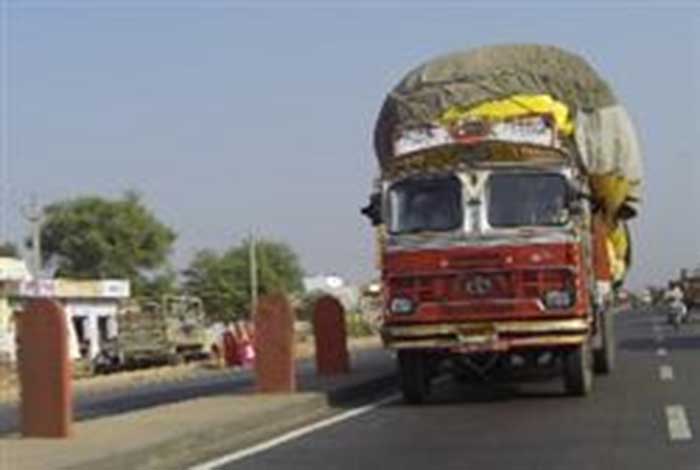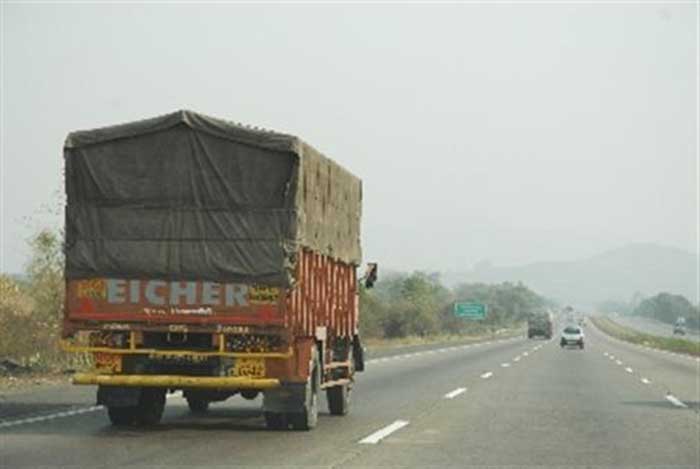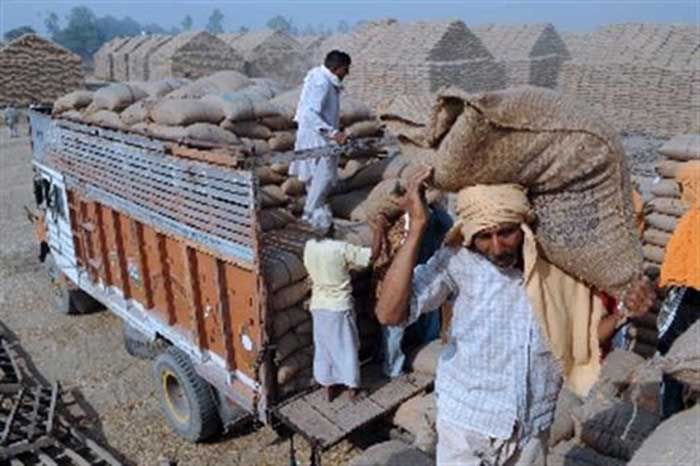 In this column, V.G. Ramakrishnan, Managing Director – South Asia, Frost & Sullivan opines that the impact of the implementation of the GST regime will be moderated by dynamics specific to India.
In this column, V.G. Ramakrishnan, Managing Director – South Asia, Frost & Sullivan opines that the impact of the implementation of the GST regime will be moderated by dynamics specific to India.A market of 1.2 billion consumers and one of the faster growing economies in the world, India requires an efficient transportation and logistics industry. With over 60 percent of goods transported by roads in 2011 and there being no significant threat from other modes like rail, coastal shipping and inland waterways, the road transportation sector is expected to remain the mainstay for goods haulage.
However, the evolution of the transportation sector has been plagued by inefficiency due to poor road infrastructure and sub-optimal supply chain networks. Supply chain design and implementation in India has been dictated more by tax considerations rather than efficiency. Goods are subjected to a multitude of taxes like excise duty, central sales tax (CST), value added tax (VAT), entry tax and octroi, among others resulting in cascading taxes and higher administrative work. This in turn entails longer lead times and higher costs. These taxes administered at various levels by the central government, state governments and local municipalities lead to a multiplicity of authorities, multitudinous documentation, bureaucratic impediments and escalating taxes.
 Manufacturers had to engage in complex supply chain solutions to transact in ‘one country but multiple state markets’ separated by their own tax laws and rates. In order to sell goods produced in one state into another state, companies were required to stock transfer goods to a warehouse before making the first sale to a distributor or dealer in the local market. Manufacturers established warehouses in every state to deal with the tax regime. Companies appointed C&F agents whose primary task was to be the custodian of the good manufactured for a cost while adding no value to the process.
Manufacturers had to engage in complex supply chain solutions to transact in ‘one country but multiple state markets’ separated by their own tax laws and rates. In order to sell goods produced in one state into another state, companies were required to stock transfer goods to a warehouse before making the first sale to a distributor or dealer in the local market. Manufacturers established warehouses in every state to deal with the tax regime. Companies appointed C&F agents whose primary task was to be the custodian of the good manufactured for a cost while adding no value to the process.Continued investment in roads is addressing infrastructure challenges, which in turn leads to the development of efficient road transportation. An efficient taxation system is the need of the hour for a fledgling market like India. Unification of India into one single market is expected to lead to significant improvement in supply chains and reduction in costs. The changes to the tax system first came about when the government mooted the idea of a Goods and Services Tax (GST) in 2007. GST was expected to change the tax landscape in India and start the process of consolidation of warehouses paving the way for large stocking points and efficient transportation methods.
The Federal polity and structure of the country required taking into account the opinions of various stakeholders including state governments from various political parties — national and regional. This led to two GST rates: one central, the other state, instead of an ideal single GST rate subsuming centre, state and local taxes, thereby establishing a truly unified and simple tax structure.
Discussion, debates and write-ups about GST and its benefits are endless. In conclusion, the general consensus is that GST is good for the economy and country. GST was to be implemented in 2010 but differences between the Central and State Governments over multiple issues including political differences stalled the implementation of this crucial tax reform. Predictions of implementation are hard to come by, but the hope and expectation is, the sooner the better.
Why is GST a crucial element of change for the road transportation sector? How much is GST a game changer and what is its impact on the commercial vehicle space? To answer these questions one needs to look closely at how these legislative changes impact the storing and sales of goods from the manufacturer to consumption centres. Comparisons have been drawn with many countries to predict warehousing post a GST scenario. India has some unique due to many factors. And these factors will play an important role in shaping the future landscape.
1. India: a country of 1.2 billion people – approximately 4-times the population of the US, leading to a high level of population density (34/km2 in the US compared to 382/km2 in India, 2011)
2. Large number of Small and Medium Enterprises producing goods catering to a wide range of customers
3. Consumption patterns, habits, and preferences vary widely across the country.
4. Increasing urbanisation across the country
5. Land acquisition and its costs
The post-GST implementation landscape in Indiais likely to showcase some interesting scenarios.
The logistics industry is gearing up for the implementation of GST. Modelling has indicated that India can be efficiently served by stocking goods across 5-6 key locations or hubs: National Capital Region (NCR Delhi) to service the northern market; Mumbai/Pune to serve the western market; Chennai/Bangalore for southern markets; Kolkata, the eastern region, and one location each to service central and north eastern regions in the country. This change is expected to create a true hub and spoke system of transportation. In effect, we would have large warehousing spaces in each of the hubs to cater to the markets in the vicinity. In the initial phase of GST implementation, it is expected that large number of warehouses across multiple states (that were around only for tax purposes) will be closed leading to consolidation of goods, which in turn will require large-sized warehouses in select 5-6 hubs that will dispatch goods directly to consumption centers.
Future: Back to the past?
However, the uniqueness of the country is expected to change some of the scenarios. It is expected that India will create its unique hub and spoke model with an initial system of 5-6 hubs and move into the system of multiple hubs and spokes over 10-15 years. Two factors offer evidence for this unfolding scenario
1. Increase in consumption due to higher incomes
2. Higher levels of urbanisation creating large cities with more than 5-million people
Currently, three Indian cities, namely, Delhi, Mumbai and Kolkata have populations in excess of 10 million. Currently, there are five cities in India that have populations between 5-10 million. As per the 2011 population census there were 53 urban agglomerates spread across 10 states that have a population of over 1 million. What is interesting is that in 2001, there were only 35 cities with populations of over a million people. Urbanisations levels are predicted to increase further. Over the next decade, the number of urban centres with a population of more than a million is expected to nearly double. Meanwhile, the metropolitan cities of Delhi, Mumbai and Kolkata will become megapolises with populations of over 20 million over the next two decades.
A case in point is the southern triad of Bangalore, Chennai and Hyderabad. These cities currently serve a population of approximately 8 million people. These cities added over 2-million people in the last decade, the same number Delhi added to its population of 16.4-million in 2001, an indication of rapid growth in population and economic activity. These cities are also state capitals and important centres of commerce.
Supply chain optimisation will indicate servicing these markets through an integrated single warehouse strategy as each city can be reached from any other in less than 16 hours. However, continued growth and creation of satellite cities or greater regions will require each market to be served individually. In concept, there is a good possibility that India could return to where it all started: 20 warehouses or more to ensure proper distribution coverage.
Some other factors could also move the market in the direction including fragmentation of producers and local tastes.


Road Transportation – Multiple Opportunities for varied stakeholders
Consolidation due to GST changes can impact the road transportation sector in many aspects. A few are listed:
1. Quicker turnaround time for trucks due to reduced paper work and lower waiting times at check posts: Higher asset productivity, leading to better profits for transporters.
2. Higher containerisation of cargo that could lead to higher efficiency of loading and unloading. Reduction in pilferage and damage during transit would be an added benefit.
3. In the short- to medium-term, post-GST implementation, the demand for large tractor-trailers and higher powered commercial vehicles could increase with a corresponding increase in demand for vehicles for last mile connectivity.
4. In real terms, polarisation of the truck market into extreme ends of the power spectrum, both upper and bottom end, can be expected. Growth of medium duty trucks could falter during this period of change.
5. If development of new micro markets fructifies and future warehouse location strategy reflects upon the current scenario, medium duty trucks and lower end (power) of the heavy duty range trucks could grow significantly
6. A direct fall out of GST would be increased competitiveness: efficient sourcing. This can lead to higher exports of goods from India translating to higher demand for trucks
7. Higher load carrying vehicles means that a fewer number of vehicles are required. With driver shortages hitting the industry hard, an unlikely benefit could less pressure to increase the talent pool of truck drivers.





















